This article dives into essential gesture prompt techniques in Applied Behavior Analysis (ABA) therapy, aimed at boosting learning outcomes for children, especially those with autism. It’s all about personalized approaches! Think physical, verbal, and visual prompts, combined with continuous evaluation and caregiver involvement. These elements are key to fostering engagement, skill acquisition, and independence in our young learners.
Research shows that when parents are actively involved, it makes a world of difference. Imagine the joy of seeing your child thrive with the right support! By focusing on these techniques, we can create a nurturing environment where children can truly shine. So, let’s explore this together and discover how we can make learning a fun and engaging journey for our little ones!
Gesture prompt techniques play a crucial role in enhancing learning outcomes for children undergoing ABA therapy. By using personalized strategies that incorporate physical, verbal, and visual cues, caregivers and therapists can create a supportive environment tailored to each child's unique needs. However, as families navigate these approaches, they often face challenges in ensuring effective implementation and tracking progress.
What are the key techniques that can empower both caregivers and children to thrive in this learning journey? Let’s explore this together! Understanding the hurdles you encounter is the first step toward overcoming them. We’re here to help you every step of the way!
At Rori Care, we understand the unique challenges parents face when it comes to their children's learning. That's why we use gesture prompt ABA techniques to enhance learning outcomes in ABA therapy. Our skilled behavior analysts take the time to evaluate each young person's distinct needs, applying customized approaches that incorporate gesture prompt ABA effectively.
This tailored planning ensures that every intervention is crafted to address the individual’s unique strengths and challenges, fostering engagement and encouraging skill acquisition in a supportive environment. We believe in setting clear, measurable goals for behavior change, which allows parents to track progress transparently.
Our evidence-driven approaches, combined with continuous assessment and adjustment of interventions, guarantee that young individuals receive the most effective assistance possible. Plus, our incorporation of advanced AI technology simplifies progress report creation, giving caregivers 50% more time for direct treatment. This ultimately empowers parents to actively engage in their child's behavioral goals.
Let’s explore this journey together! We’re here to help you every step of the way!
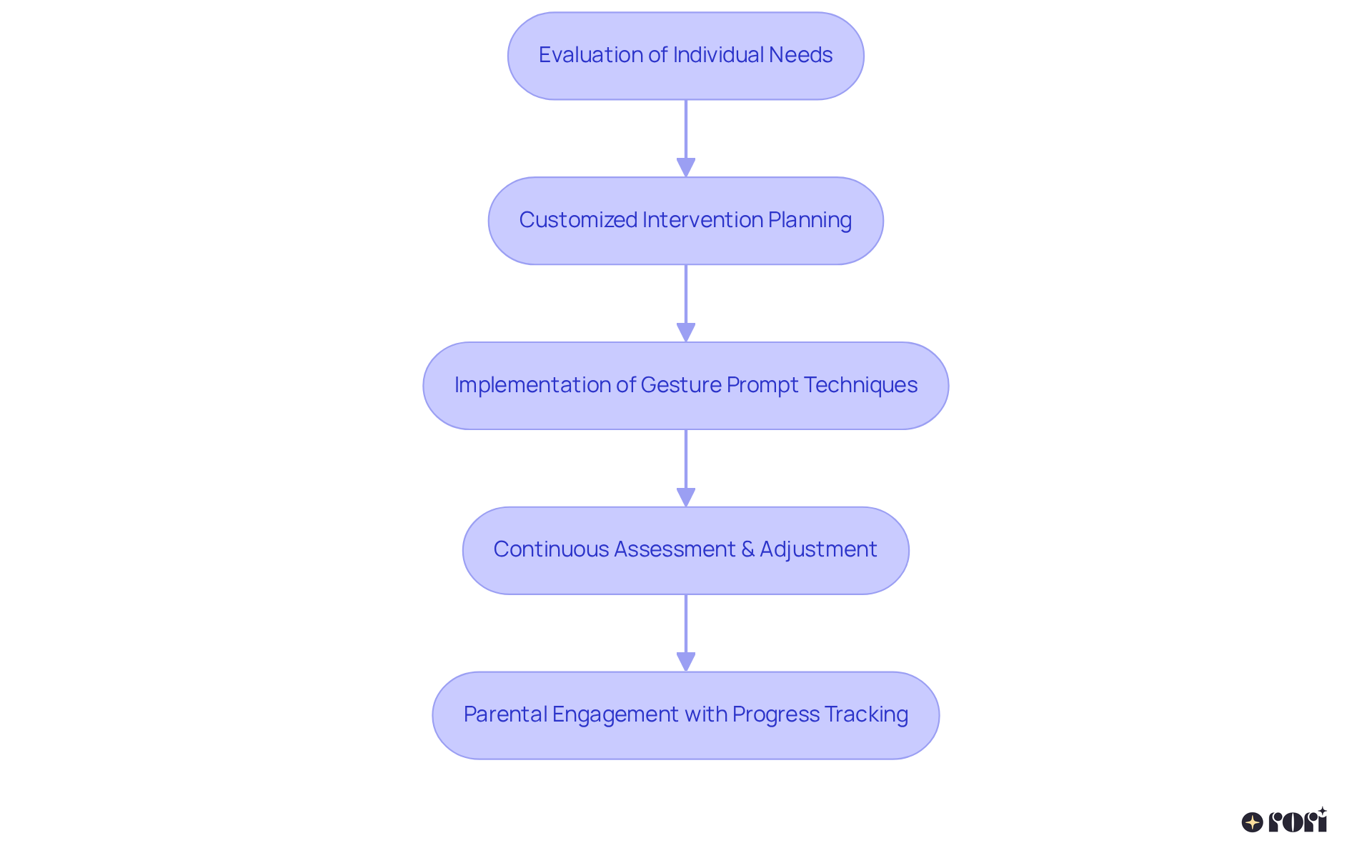
Physical prompts are all about hands-on guidance. Imagine gently holding a young person's hand to help them complete a task. This approach is particularly helpful for young individuals who might find verbal instructions a bit tricky. By incorporating that tactile support, therapists can create a safe and encouraging environment. Not only does this aid in skill acquisition, but it also promotes independence as individuals progress.
Recent studies show that tactile instructional techniques can really boost engagement and retention in autism therapy. It turns out that youngsters often respond positively to physical guidance! Plus, using tactile support has been linked to better outcomes in various learning environments, helping kids grasp tasks and concepts more deeply. As they engage with their surroundings through touch, they develop vital abilities that support their overall growth and independence. Let’s explore this together and see how we can make a difference!
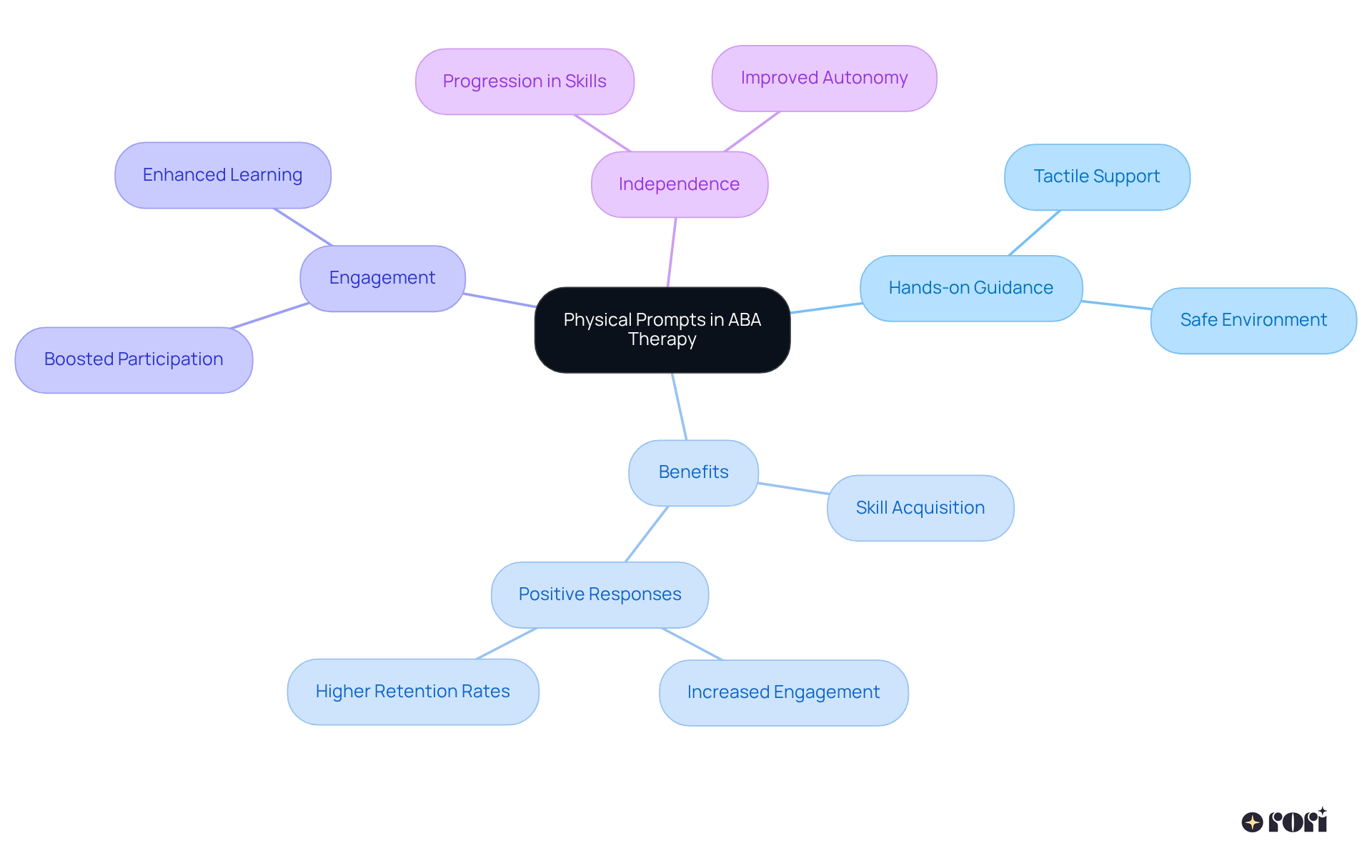
Verbal cues are essential tools in ABA therapy, acting as spoken signals that guide a young person's behavior. For instance, when a therapist says, 'Please pick up your toy,' it encourages the desired action. This approach not only helps in skill development but also enhances the young person's ability to understand and respond to verbal communication. By promoting more interaction with peers and caregivers, verbal cues are crucial for developing communication skills.
Research shows that consistently using verbal cues can lead to significant improvements in expressive language and social communication. This ultimately helps youngsters navigate social situations more effectively. Plus, when verbal cues are integrated into daily activities, it creates a supportive environment for communication, allowing young individuals to practice and apply their skills in various contexts.
As therapists gradually reduce reliance on these cues, children gain independence in their learning processes, which is vital for their overall development. Caregiver involvement is key during this journey; by actively participating and grasping ABA principles, caregivers can effectively support their child's progress.
However, challenges like cue fading, cue overload, and cue inconsistency can pop up. It's important for parents to be aware of these potential hurdles. Continuous data collection and analysis enable therapists to adapt the use of verbal cues, ensuring optimal progress tailored to each child's unique needs. This not only empowers caregivers but also enhances the overall effectiveness of the therapy. Let’s explore this together! 😊
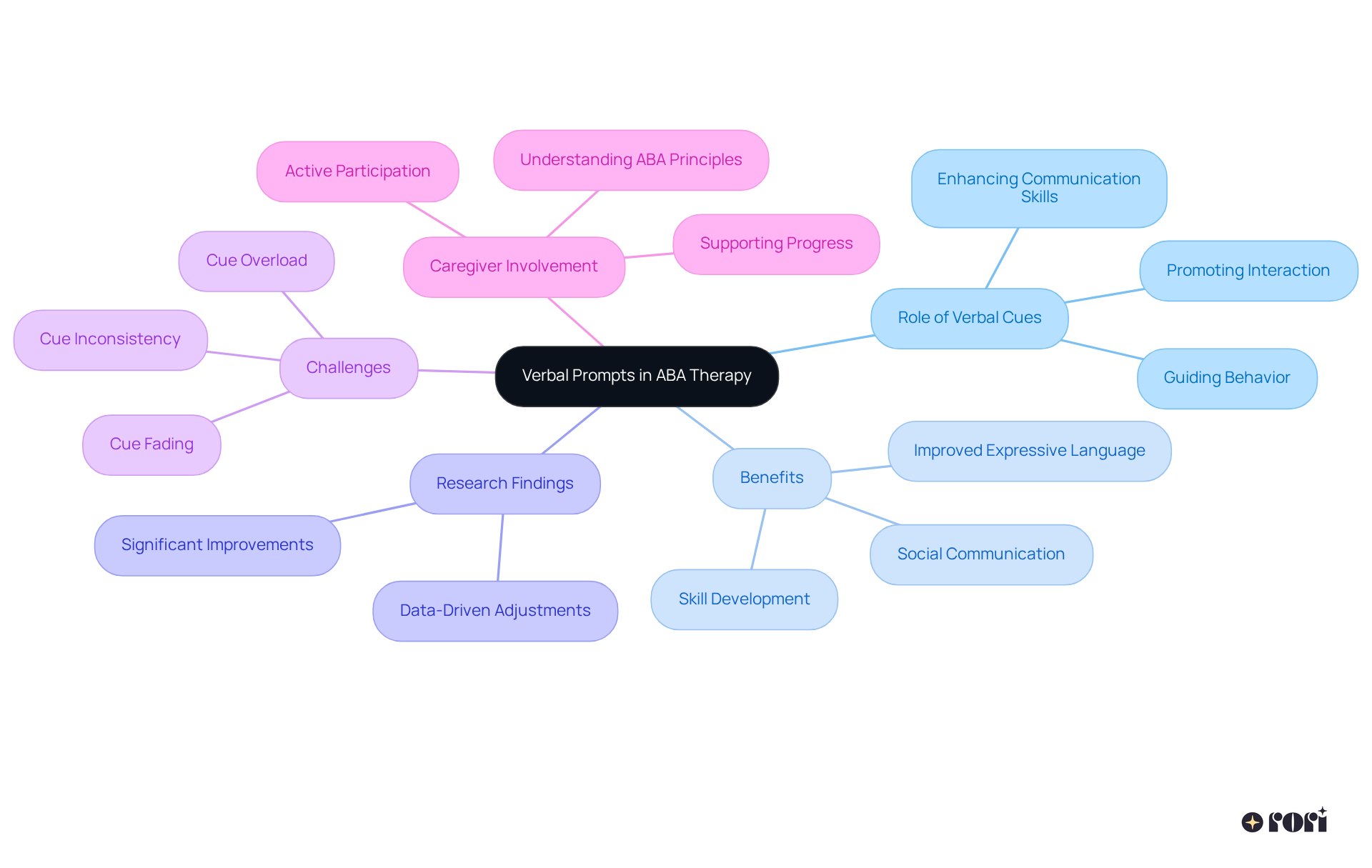
Gestural prompts are all about using non-verbal cues—like pointing or nodding—to guide a young person’s actions. For example, a therapist might indicate a toy to inspire a child to engage with it. This approach is particularly helpful for kids who may have limited verbal skills, as it encourages them to communicate through gestures, boosting their social abilities.
By incorporating gesture prompt aba into social skills group therapy, caregivers can actively participate in their child’s learning journey. It’s a wonderful way to reinforce these skills at home! This collaborative method not only enhances communication but also strengthens relationships, giving caregivers the know-how and techniques they need to effectively support their child’s behavioral goals.
And let’s not forget about caregiver education! It’s crucial for equipping parents with the tools to apply these strategies consistently. This consistency can significantly improve the effectiveness of gesture prompt aba therapy, which is designed to meet the unique needs of each child. So, let’s explore this together and see how we can make a difference in our little ones’ lives!
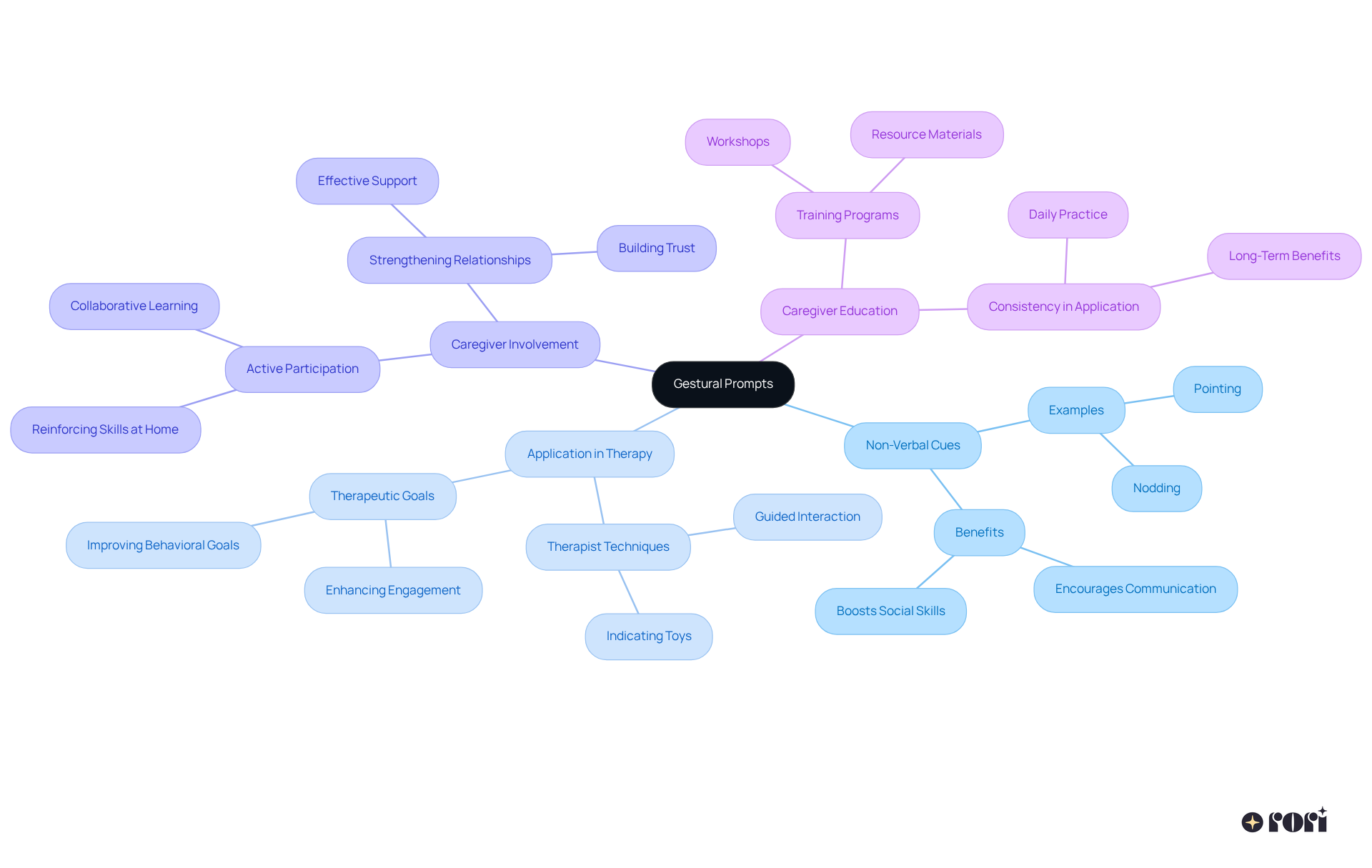
Visual prompts, such as images, symbols, or written instructions, are extremely helpful in supporting development within gesture prompt ABA therapy. For example, a visual timetable can clearly show the order of daily activities, helping kids know what to expect throughout their day. Research has shown that using visual activity schedules (VAS) can boost task completion rates and improve educational outcomes. In fact, studies indicate that children with autism often show significant increases in on-task behavior when these tools are used.
By providing gesture prompt ABA as clear visual signals, therapists can really enhance a young person's ability to follow directions and complete tasks on their own. This approach not only makes learning more accessible but also encourages engagement, as kids feel more prepared to understand and explore their environment with the help of gesture prompt ABA. Educators have noticed that incorporating visual aids can transform the learning experience, making it more organized and predictable—especially beneficial for those with autism.
Moreover, as Rori Care - ABA Therapy emphasizes, early intensive behavioral intervention (EIBI) gives kids the tools and strategies they need to navigate their world, communicate effectively, and develop essential life skills. Empowering caregivers with ABA principles and strategies boosts their ability to support their child's behavioral goals, leading to better outcomes and a more connected learning experience. Let’s explore this together and see how we can make a difference!

Gesture prompt ABA is a fundamental technique in ABA therapy, in which therapists demonstrate desired behaviors for young learners to imitate. For instance, a therapist might show a young person how to brush their teeth before encouraging them to give it a try on their own. This approach is particularly effective because it includes a gesture prompt ABA that provides a clear visual example of the expected behavior, making it easier for kids to understand and replicate.
Many individuals with autism spectrum disorder (ASD) face challenges with imitation, which is why gesture prompt ABA becomes an essential tool for skill development. By observing and imitating modeled behaviors, young learners can pick up complex actions more efficiently. In fact, studies have shown that kids who receive structured modeling techniques see significant improvements in acquiring new skills.
As specialists in the field point out, effective modeling through the gesture prompt ABA not only enhances understanding but also fosters autonomy, allowing youngsters to engage more fully in daily activities. The use of demonstration methods in autism therapy really highlights the importance of visual learning, especially for young individuals who benefit from clear, tangible examples of desired behaviors.
Let’s explore this together! Encouraging your child through modeling can be a wonderful way to support their learning journey.
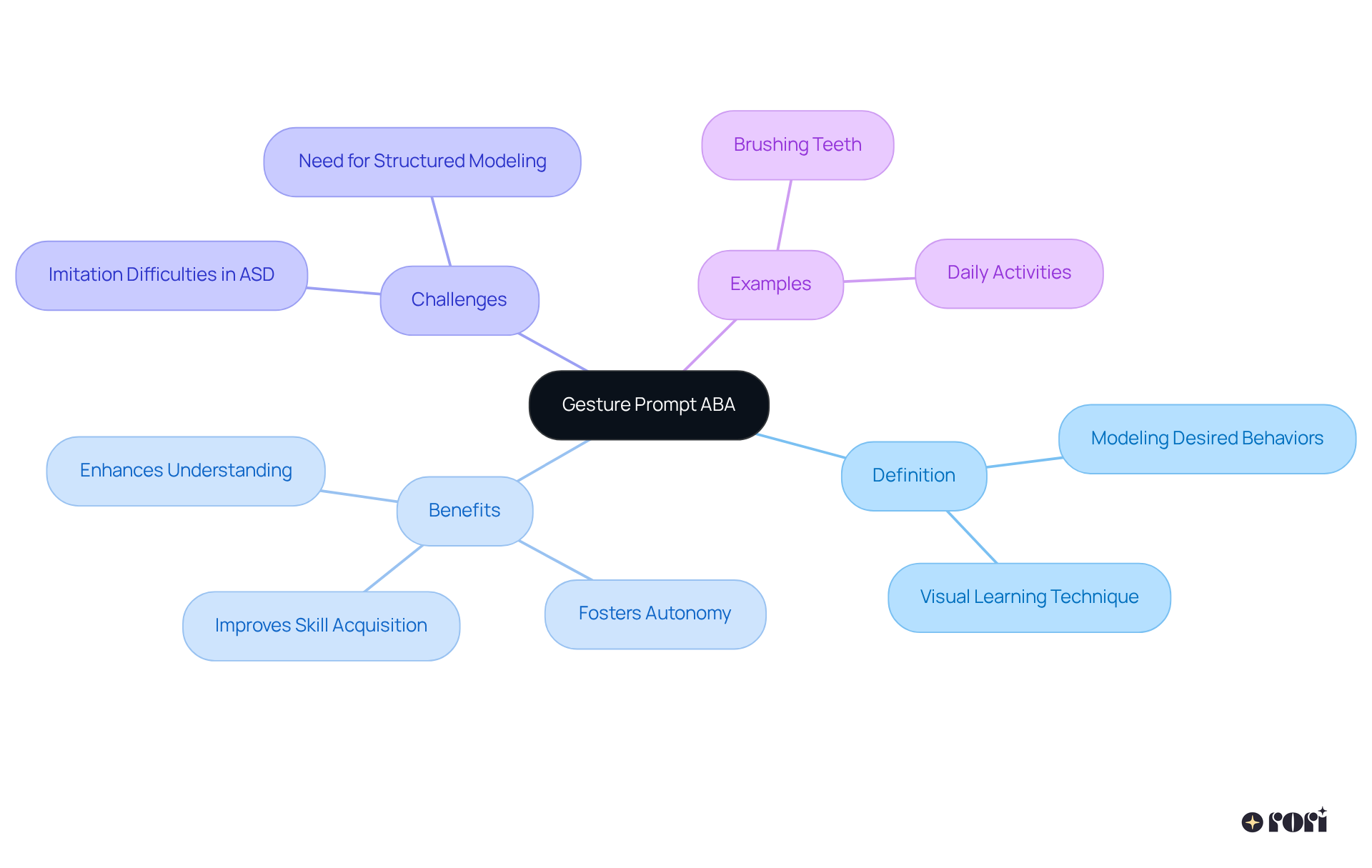
Positional cues can be a wonderful tool in ABA therapy! By using a gesture prompt aba to strategically arrange objects or signals, we can encourage a young person's response. For example, placing a toy within easy reach might just spark their interest and get them to engage. This not only boosts their involvement but also helps them connect with their surroundings and learn new skills. Clinicians often highlight how thoughtful positioning can serve as a gesture prompt aba, significantly impacting a child’s ability to focus and respond, thereby demonstrating the importance of the environment in creating effective learning experiences.
At Rori Care, we take pride in designing customized ABA therapy programs that cater to each child's unique needs, strengths, and aspirations. Our certified behavior analysts craft personalized plans with clear, measurable objectives and research-supported approaches. This ensures that we consistently track each child's progress and make adjustments based on ongoing assessments. Caregiver involvement is key here! When caregivers actively participate, it enhances the effectiveness of these strategies and leads to better behavioral outcomes.
Collecting data during gesture prompt ABA sessions is essential for guiding our programming decisions. It helps us optimize the use of gesture prompt aba for each learner. With automatic data collection, our clinical team can focus entirely on your child without interruptions, securely storing and anonymizing data for analysis. Plus, it's important to remember the initial response interval of 3 to 5 seconds when using these techniques, as this timing can really influence a young person's engagement and response.
By empowering caregivers with ABA principles and strategies, we’re enhancing support and informed decision-making, ultimately improving behavioral outcomes for youth. Let’s explore this together! We’re here to help you every step of the way!
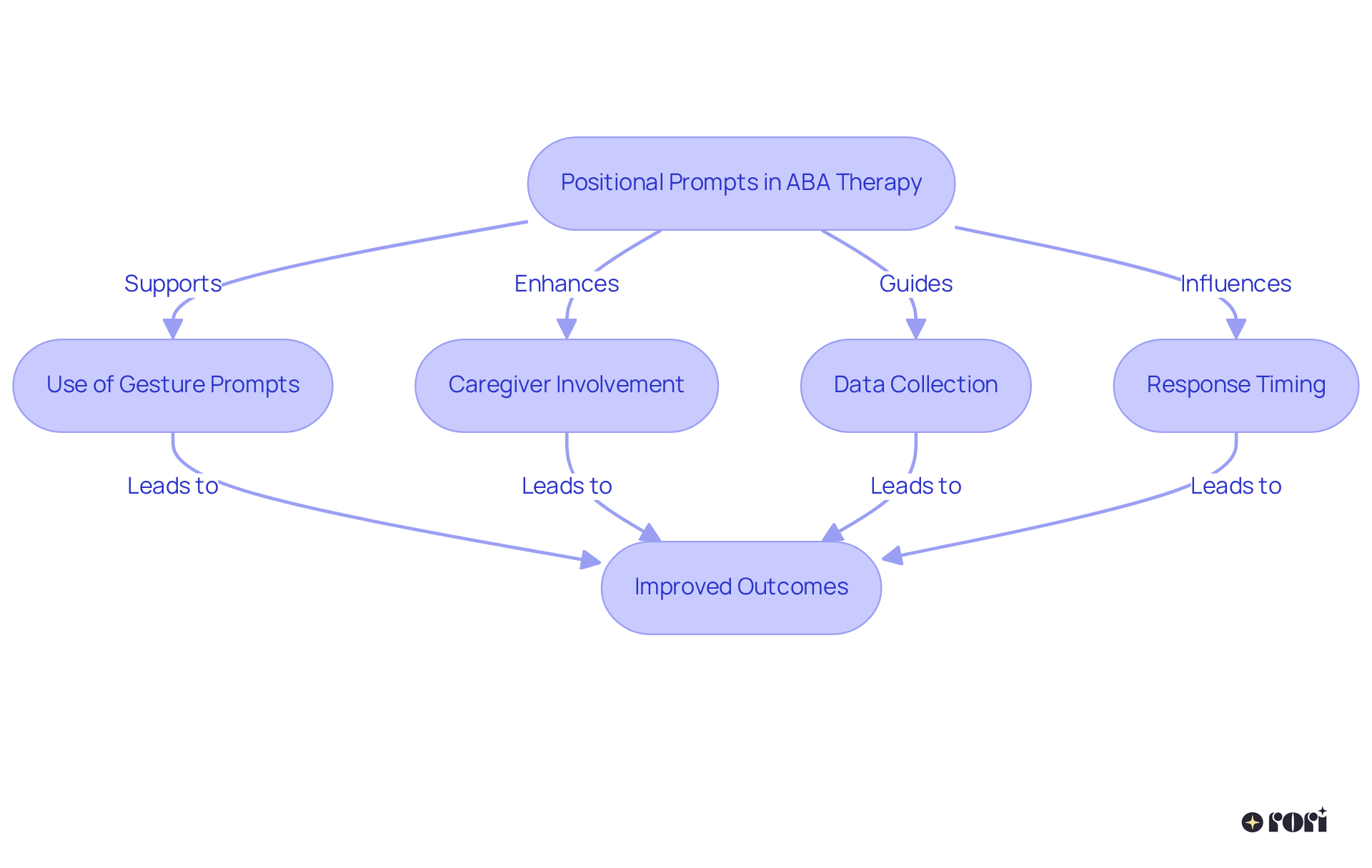
Fading methods, such as the gesture prompt aba, play a vital role in ABA therapy by focusing on gradually reducing cues or support as your little one learns new skills. Imagine a therapist starting with full physical prompts, then moving to partial prompts, and finally using just verbal cues as the child gains confidence. This step-by-step approach not only promotes independence but also helps build self-assurance, allowing kids to tackle tasks on their own without relying on outside prompts.
By using fading strategies, therapists can effectively encourage self-sufficiency, ensuring that skills are carried over into different settings, like home and school. The goal here is to help young individuals become capable of navigating their daily activities independently. Experts highlight that consistent monitoring and teamwork between caregivers and therapists are essential for success, reinforcing the need for a coordinated approach to fading techniques.
As caregivers, you can boost your effectiveness by recognizing the benefits of your involvement. This means making informed decisions and enhancing behavioral outcomes. To start applying the gesture prompt aba fading methods at home, begin practicing with your child using full cues and gradually reduce support as they become more skilled. Let’s explore this together! Your engagement is key to their growth, and we’re here to help you every step of the way!

The least-to-most prompting technique is a systematic approach that begins with the least invasive cue, gradually increasing support when needed. For example, a therapist might start with a simple verbal cue and only provide physical assistance if the young person doesn’t respond. This method not only encourages independence but also ensures that young individuals receive the tailored support they need to thrive.
Research indicates that this approach can significantly lower frustration levels for kids with Autism Spectrum Disorder (ASD), helping them engage more effectively in educational activities. By gradually reducing prompts as the young learner builds confidence, this technique nurtures self-sufficiency and encourages skill generalization in various settings.
Clinicians emphasize that executing this approach thoughtfully is vital for fostering autonomy while respecting each child's unique learning style. Plus, ongoing assessment and adjustment of prompting methods are key in ABA therapy to track progress and tweak plans, ensuring meaningful advancements without unintended setbacks.
The types of cues used in this strategy include:
With the gesture prompt aba being one of them, all of which can be tailored to fit individual learning styles and boost engagement. This personalized planning, guided by skilled behavior analysts, aligns with the ultimate goal of empowering families and clinicians in autism care.
In the end, the least-to-most prompting method truly highlights how structured prompting can enhance skill acquisition in youth. It reinforces the importance of caregiver involvement and education in supporting their behavioral goals. Let’s explore this together, and remember, we’re here to help you every step of the way!

Continuous evaluation is all about regularly checking how well gesture prompt ABA techniques are working in ABA therapy. Certified behavior analysts create personalized plans that include measurable goals and methods backed by research. This way, interventions are tailored to meet each young person's unique needs.
By observing how a young person is progressing and responding, therapists can make informed adjustments to their strategies. This ensures that the interventions stay effective and aligned with the young person's developmental goals. Ongoing evaluation is crucial for promoting long-term success and independence in individuals with autism.
Plus, with the integration of AI-driven progress report automation, tracking progress becomes much easier! This innovation frees up 50% more time for direct child treatment, further supporting the adaptable nature of ABA therapy. Let’s explore this together and see how these strategies can make a difference!

Exploring gesture prompt ABA techniques truly highlights their essential role in supporting effective learning for children, especially those with autism. By using personalized strategies—like physical, verbal, gestural, visual, modeling, positional, fading, and least-to-most prompting methods—caregivers and therapists can create a nurturing and engaging environment that meets each child's unique needs.
The article shares key insights about how these techniques not only boost skill acquisition but also foster independence and self-sufficiency. Continuous evaluation is crucial, ensuring that interventions stay effective and aligned with developmental goals. This empowers caregivers to be active participants in their child's learning journey. Plus, the integration of advanced technology makes tracking progress easier, leading to more focused and effective therapy sessions.
In conclusion, embracing these gesture prompt techniques in ABA therapy is vital for unlocking the potential of young learners. By fostering collaboration between caregivers and therapists, and adapting approaches based on individual progress, we can create a brighter future filled with growth and independence for children with autism. Engaging with these methods benefits not just the child, but also strengthens the entire support system around them, leaving a lasting impact on their learning and development. Let’s explore this journey together!
What is Rori Care's approach to ABA therapy?
Rori Care uses personalized gesture prompt techniques in ABA therapy to enhance learning outcomes. Their skilled behavior analysts evaluate each child's unique needs and apply customized approaches that effectively incorporate gesture prompts.
How does Rori Care ensure effective learning for each child?
They create tailored intervention plans that address individual strengths and challenges, set clear measurable goals for behavior change, and use evidence-driven approaches with continuous assessment and adjustment of interventions.
What technology does Rori Care use to support progress tracking?
Rori Care incorporates advanced AI technology to simplify progress report creation, allowing caregivers to have 50% more time for direct treatment and actively engage in their child's behavioral goals.
What are physical prompts in ABA therapy?
Physical prompts involve hands-on guidance, such as gently holding a child's hand to help them complete a task. This technique is beneficial for those who find verbal instructions challenging, promoting skill acquisition and independence.
What benefits do physical prompts provide?
Recent studies indicate that tactile instructional techniques enhance engagement and retention in autism therapy, helping children grasp tasks and concepts more deeply while supporting their overall growth and independence.
What role do verbal prompts play in ABA therapy?
Verbal prompts are spoken signals that guide a child's behavior, aiding in skill development and enhancing their ability to understand and respond to verbal communication.
How do verbal prompts contribute to social communication?
Consistent use of verbal cues can significantly improve expressive language and social communication, helping children navigate social situations more effectively.
What challenges might arise with the use of verbal prompts?
Challenges include cue fading, cue overload, and cue inconsistency. Parents need to be aware of these potential hurdles to support their child's progress effectively.
How do therapists adapt the use of verbal prompts?
Therapists utilize continuous data collection and analysis to adapt verbal cues, ensuring optimal progress tailored to each child's unique needs while empowering caregivers in the process.